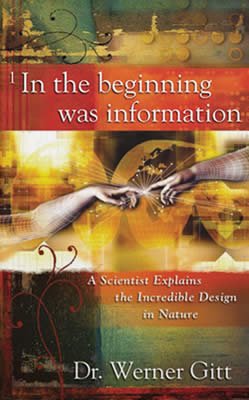
Chapter 9
The Quality and Usefulness of Information
To rise above Shannon’s information theory, it is necessary to define measures for semantic information which must be generally valid.
Shannon’s information theory can be regarded as an extension of probability theory. He takes the bit as the unit of measurement of information, and a book with 200 pages then contains twice as much information as one with 100 pages if the pages contain the same number of letters. Meaning is completely ignored. Wolfgang Feitscher gave a striking description of this situation: “When considering semantic information, we are like a chemist who can weigh substances, but cannot analyze them.” In this sense, Shannon solved the problem of weighing information, but the analysis question is still untouched. To rise above Shannon’s theory, it is necessary to define measures for semantic information which must be generally valid. We will now discuss some aspects which may pave the way for solving this difficult problem.

Figure 25: Graph representing the evaluation levels of the usability of semantic information. There is no indication of scale, so we are mainly dealing with a qualitative evaluation of semantic information. Valuable information is accorded a positive, and worthless information a negative, sign. Usable and useless information are also distinguished by their sign.
A semantic measure would not be a measure of quantity but of quality. It could happen that a book of several volumes may have a lower semantic evaluation than a thin brochure. A qualitative evaluation of information involves some parameters which depend very strongly on a subjective appraisal, and this has an appreciable aggravating effect on the problem. Figure 25 depicts a graph of the semantic value of information with respect to its usefulness. There are five value levels.
- Extremely important information: This is the highest level because of its high apobetics content (e.g., essential and vital information).
- Important information: Information which is required for achieving some purpose (e.g., knowledge of planned routes, telephone numbers, address lists, and subject knowledge).
- Valuable information: This includes information which is of general value in the sense of being informative, constructive, edifying, or amusing (e.g., daily news, weather reports, general increase of knowledge, and novelties).
- Trivial information: Insignificant or meaningless information (e.g., already known or useless information, clichés, banalities, or small talk).
- Harmful information: Information with negative consequences, leading to false results, misconceptions, and other negative effects (e.g., deliberate or erroneous misinformation, slander, cursing, agitation, false propaganda, charlatanry, malicious gossip, expletives, sectarian doctrines, unbiblical theology, pornographic, ideological, and astrological publications, and pulp magazines).
Valuable information (1 to 3) is accorded a positive sign, and worthless information (4 and 5) a negative sign, so that now we can regard information as a signable quantity. In the x direction (Figure 25) we distinguish between usable (positive) and useless (negative) information. We thus have four quadrants for evaluating information, characterized as follows.
First quadrant: This is the most important domain, since it is comprised of all information that is both useful and valuable. “Useful” means that the information is available and accessible and can, in principle, be implemented. On the one hand, usefulness is an objective property, but the concept of value concerns a person, an event, a plan, or a purpose, and it is always subjective.
Second quadrant: The information in this quadrant is also valuable, as in the case of the first quadrant, but it cannot be used. There are various possible reasons for this:
—It is not yet available (e.g., cure for cancer; a book on an important theme which has not yet been written).
—It cannot be located in the gigantic flood of information.
—The author has it available, but it has not yet been transmitted (published).
—It is not of topical interest any more.
Third and fourth quadrants: This is the domain of worthless information. At the trivial level, this is comprised of meaningless or unordered information: insignificant, inane, or nonsensical information. In the amplified harmful form, information can be false (inadvertently), deliberately falsified, or evil and can have negative effects. The fourth quadrant indicates that such information exists, while the third quadrant depicts information that is not yet available or accessible (e.g., trash literature which is unpublished). According to certain statistics, an American youth at the end of his school career attended 11,000 school periods, watched TV for 22,000 hours, during which he heard 350,000 promotional slogans, and saw 20,000 murders. That has to have injurious effects. It is, in human terms, necessary to avoid the fourth quadrant, and, in technical terms, security measures must be taken to prevent damage (e.g., error-detecting codes in data processing systems, and control procedures for preventing instability in manufacturing processes).
In the Beginning Was Information
Between the covers of this book may well be the most devastating scientific argument against the idea that life could form by natural processes.
Read OnlineRecommended Resources

Answers in Genesis is an apologetics ministry, dedicated to helping Christians defend their faith and proclaim the good news of Jesus Christ.
- Customer Service 800.778.3390
- © 2025 Answers in Genesis




